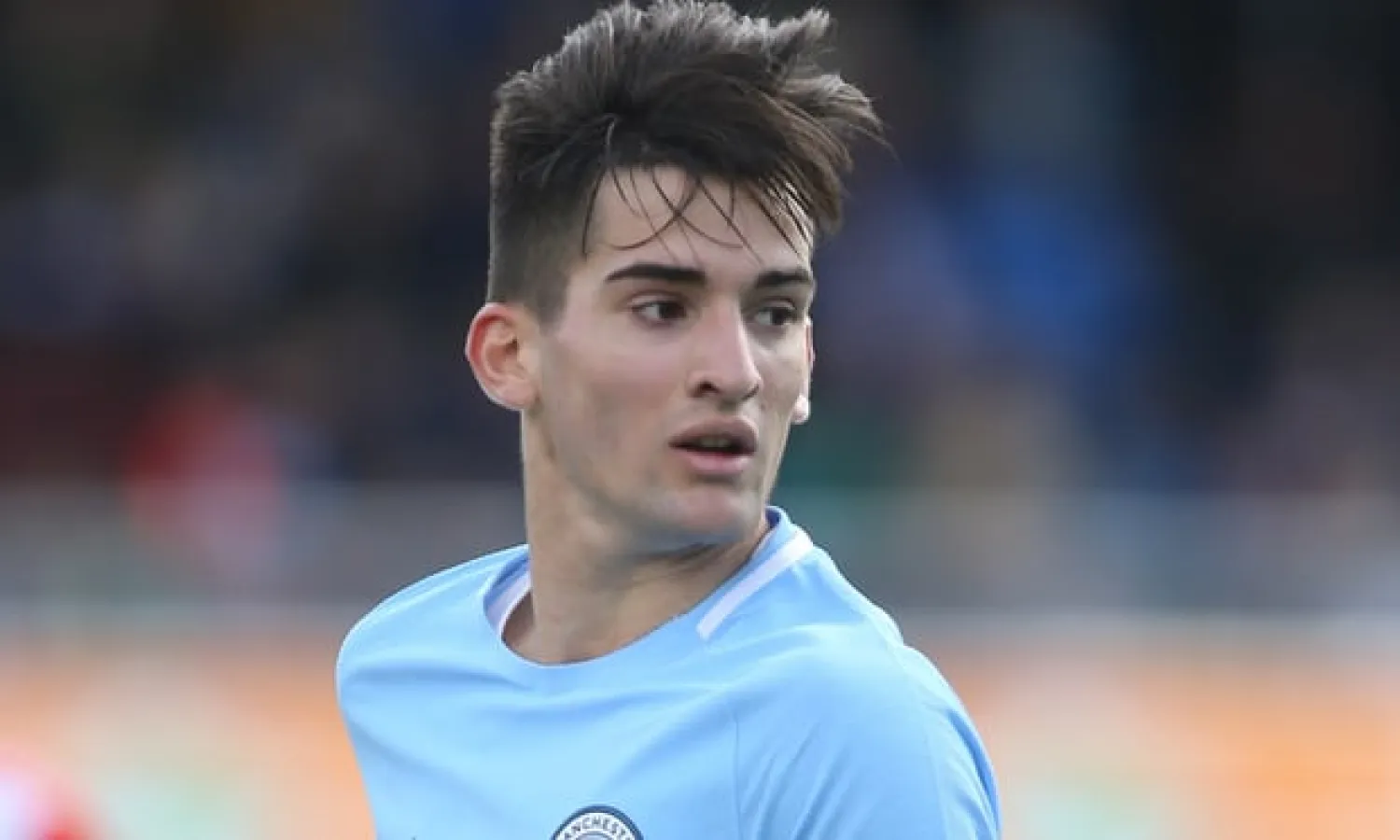Ottmar Hitzfeld, the former Borussia Dortmund and Bayern Munich manager, used to speak of the red zone, a central area of the pitch just outside the penalty box. Control that, he believed, and you controlled the game. If in your half you denied the opposition the ball in that space, they were forced wide and while crosses can be dangerous they are a low percentage route to goal.
At the other end a player with time on the ball in that zone was a major threat, able to shoot or slide balls through the defence. As teams have become increasingly adept at plugging the red zone – often with the use of two holding midfielders – the danger area has shifted. Manchester City, notably, target the area on the edge of the Hitzfeld red zone, the space between the central defender and the full-back.
An awareness of the vulnerability of that area is not something particularly new. In a 4-4-2 a forward with any level of tactical awareness would try to exploit it. Perhaps the centre-back and the full-back both think the other is covering and the forward is left unmarked. Or perhaps both mark the one player, leaving space elsewhere. Or if one marks the forward he can move into the other defender’s zone, disrupting the defensive structure.
It is a simple enough idea but, as Thierry Henry explained on Sky, it remains potent at the highest level. The idea of disruption, of existing in the pockets that elude the marking structure, was at the heart of Pep Guardiola’s Barcelona.
“If you stand between the right-back and the right centre-back and [Samuel Eto’o] or me does the same on the other side, suddenly you hold four players alone,” Henry said. “Just from you being high and wide, and then coming back in, you are actually freezing four players because we are threatening to go in behind.”
Because they were so terrified of leaving Henry or Eto’o free, defences did not push up and full-backs did not move into midfield. The effect was to create more space in midfield for Lionel Messi dropping off as a false nine and for Xavi and Andrés Iniesta advancing from midfield (not to mention the complication of Dani Alves’s surges from a notional right-back position).
City have exploited the same basic idea slightly differently but the importance of those channels between the centre-back and full-back is seen in the way Guardiola, as he did at Bayern, has the City training pitches marked out in 20 zones. In principle no more than three zones in the same horizontal line and no more than two zones in the same vertical line should ever be occupied.
If a player moves into a zone that means four in the same horizontal line are occupied, one of the other three should move, ensuring the man on the ball always has two or three passing options. But what is also significant is that dividing the pitch in such a way emphasises the importance of those channels between full-back and centre-back.
Last season one of the great strengths of Chelsea was the way their structure controlled those channels, their 3-4-2-1 system providing both two holding midfielders (N’Golo Kanté and Nemanja Matic) and two players who were in effect inside-forwards (Eden Hazard and Pedro or Willian), who operated in awkward pockets in which they fell outside the natural zone of the opposing centre-back, full-back and holding midfielder.
Guardiola had Kevin De Bruyne and David Silva operating in “free eight” roles from the start of last season, to all intents roving inside-forwards whose forward runs would exploit those channels. The big difference with Chelsea, though, was that City maintained out-and-out wingers (in the modern sense of the term) rather than wing-backs.
Guardiola did toy with a back three at the start of this season, although that seemed to be a way of getting Sergio Agüero and Gabriel Jesus into the side in a 3-3-2-2 (or perhaps even 3-1-4-2) rather than Chelsea’s 3-4-2-1.
The system brought two wins and a draw but perhaps because the attacking six frequently found themselves strung out in a line as the forwards tried to drop off to create space for Silva and De Bruyne to burst into, it never resurfaced after a switch to 4-3-3 brought a 6-0 win over Watford and a 5-0 win over Crystal Palace in quick succession.The role of Fernandinho in protecting the back four is crucial, particularly on those occasions when both full-backs have been given licence to attack. But there have also been times when the full-backs, Fabian Delph in particular (and most notably away against Chelsea), have tucked inside, with the corresponding centre-back moving wider, occupying precisely those channels De Bruyne and David Silva try to attack at the other end of the pitch.
That is useful as a way out from the back – and Ederson’s calmness in possession has been a major feature, notably at home against Tottenham when he bypassed the press with a string of accurate long passes. It also gives City protection against the counterattack; although, as the Champions League games against Liverpool suggested, perhaps not enough.
City’s domination of the channels at one end of the pitch has been their triumph; their failure to do the same at the other end has been their undoing.
The Guardian Sport







